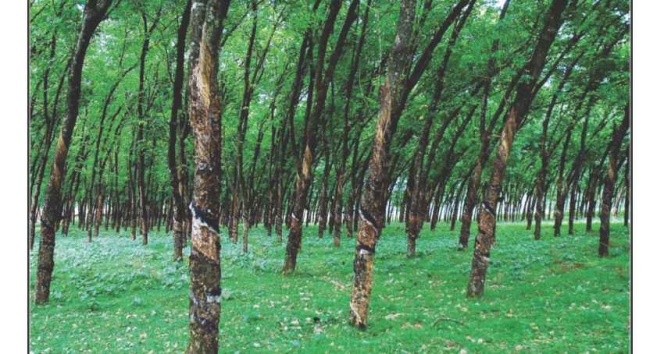
Is Natural Rubber under mortal threat? Is there a possibility that factors like climate change, diseases etc. will bring the plantation industry to its knees?
It is a fact that the traditional rubber growing regions in almost all rubber producing countries in Asia are increasingly constrained by adverse effects of Climate Change. The yield from Hevea in traditional regions is impacted by extreme weather, recurrent cyclones, depression rains and flash floods. The last couple of years have seen interruption to tapping due to unforeseen rains and floods. Another major constraining factor is the recurrent outbreak of new diseases. For example, the outbreak of a new fungal leaf disease (Pestalotiopsis leaf fall disease) reported in Indonesia in 2018 has now spread into around 387,000 ha of mature rubber trees in the country. An estimated 141,000 ha in Thailand, 16,000 ha in Malaysia and 4,000 ha in Sri Lanka are reportedly affected by new fungal leaf diseases.
The low rubber prices that continued over several years resulted in poor maintenance of rubber holdings in almost all producing countries. As resource-starved farmers could not apply fertilizers or adopt proper crop protection measures over several years, rubber trees became weak and lost their resistance to diseases and extreme weather. It is striking to note that the root cause of the decline in yield is the unattractive prices and the resultant poor maintenance of holdings. A major trend reversal of prices can bring glaring positive changes in the natural rubber production sector. The potential national average yield (i.e., the annual production from a unit hectare of tapped trees) is 20 to 30% higher than what is realized now. For example, the average yield in India is currently 1,400 kg per hectare. But a favorable price can increase the average yield to the range of 1,750-1,800 kg. The country had realized the average yield of 1,823 kg in 2012 when the prices ruled high. Moreover, a large extent of mature trees which are currently left untapped in the country will come back to production once farmers find the prices attractive. The country has around 200,000 hectares of mature trees which are left untapped.
More specifically, it is the uneconomic return from the venture that hinders the natural rubber production sector. There is no mortal threat to the supply base as far as prices stay remunerative and the net profit from the venture is attractive. No industry can sustain for a long if it is economically unviable and natural rubber is no exception.
Can a COVID19 like pandemic impact NR industry long term? Do plantations have an effective healthcare plan to ensure labourers’ health and safety?
NR sector globally has almost fully recovered from the impact of the Covide-19. This is particularly true with reference to the global production, consumption, trade, and prices of natural rubber. The prices in key physical markets had crossed over the pre-covid level even by October 2020 and firmed up further since February 2021.
It is true that the production and processing sectors in Thailand and Malaysia are partly hindered as cross-border travel restrictions prevent migrant workers from neighboring countries to return to works. This issue, to a large extent, is resolved by making use of local workers by providing them necessary skills training. Coming to the downstream manufacturing sector, large number of debt-burden units in the MSME sector are reportedly struggling hard to bring their businesses back to normal. On the other side, large-scale manufacturing units, particularly those in auto-tyre manufacturing, have made V-shaped recovery driven by the pent-up momentum generated on lifting of the lockdowns. For healthcare rubber products such as rubber gloves, the epidemic has been a major boon. Taking the global rubber industry as a whole, the industry has already come out from the impact of the pandemic.
Workers engaged in large plantations are provided with social security and healthcare facilities as per the regulatory provisions being followed by the governments in the respective countries.
What are the chances of NR getting totally replaced by alternative rubbers? Will this happen? If so, how soon?
NR getting totally replaced by any alternative material is an impossible event in any case. The relative share of NR in the total quantity of new rubber (i.e., natural rubber and synthetic rubber) globally consumed was less than 30% during early 1970s. From that low level, the relative share of NR has gone up to nearly 50% as of now (47.2% in 2020). Synthetic rubber and natural rubber are not competing each other because technical considerations limit the scope of substitution between the two.
Lack of sufficient economic benefits is considered to be a reason for planters looking for alternate crops that can bring faster financial returns. How real is this? How much of rubber plantations have been replaced by other crops?
A total extent of nearly 0.6 million hectares of rubber trees was estimated to have cut down during 2015-2020 period in Thailand, Viet Nam, China, Malaysia, and India for cultivation of other crops or for conversion of land for non-farm uses. The details are given below:
|
|
Extent of rubber area discarded during the period 2015-2020 (Hectares) |
|
Thailand |
440,000 |
|
Viet Nam |
72,000 |
|
China |
46,000 |
|
Malaysia |
24,000 |
|
India |
4,000 |
In the case of Thailand, farmers are offered attractive cash incentive (More than US$3500 per hectare) by the government for removing aged rubber trees and planting other crops. It means, the shift from rubber in Thailand is largely policy driven. The case of Thailand is an exception. Generally speaking, the crop shift from rubber over the past few years is caused by the unattractive net profit from the venture.
Is plantation industry too slow to modernise itself, technologically as well as in terms of attracting skilled labor?
It is a fact that technological progress is severely constrained in the smallholder-dominated rubber production sector. The unattractive prices that prevailed over the period since 2015 made the farmers deprived of resources. Although high-yielding clones are available, farmers are generally postponing the replating of aged low-yielding trees due to their inability to meet the huge replanting cost. Another factor that prevents smallholders from replanting is the uncertainty of the farmers over the long-term prospects of rubber cultivation. Unattractive prices have also discouraged farmers from adopting good agricultural practices. Poor return from the venture has compelled farmers to discontinue the application of fertilizers, pest and disease management measures, and proper maintenance of holdings. Larger section of farmers has discontinued the use of stimulants and rain-guarded tapping. However, technological progress continued in large plantations owned by corporates, enterprises, and the public sector.
NR supply has always been unstable due to various reasons. Is this prompting manufacturers to look for other options?
There is no serios supply constraint or supply uncertainty as of now except the seasonal shortage. Moreover, all the producing countries have huge potential to increase their supply if the prices become attractive. This point was elaborated earlier.
Is there a campaign being run by alternative rubber sector to put pressure on NR industry?
As stated earlier, NR does not face any threat from alternatives basically due to the reason that the only substitute for natural rubber is natural rubber. In the total global consumption of new rubber (i.e., natural rubber plus synthetic rubber), the relative share of NR is currently around 50% (47.2% in 2020) as against less than 30% in early 1970s. There is no reason to anticipate a fall in the relative share of NR in the next three decades at least.
Are environmental sustainability factors detrimental to NR cultivation?
Environmental considerations can only help NR to gain preference over synthetic rubber, polyurethane, and other materials in various applications because natural rubber is recognised as “an environment-friendly industrial raw material and renewable resource”. The following points establish such a view:
- Rubber plantations purify atmosphere by absorbing CO2 and releasing O2. Based on scientific research undertaken by rubber research institutes in five countries, it is empirically proven that a hectare of rubber plantation annually sequesters as much as 30 tonnes of CO2 from atmosphere which is near to that of the Amazonian base.
- Rubber plantations are a good source of timber and bulk of this goes into furniture industry thereby protecting large extent of forests from being logged every year. Secondary branches of the rubber trees go into the fiber board industry and small twigs are used by the rural people as a source of firewood, both indirectly saving forests.
- Rubber plantations contribute to sustainable soil productivity. Soil productivity has not deteriorated in any of the traditional rubber growing countries which have the history of growing rubber for more than 100 years and already completed 3-4 rubber plantation cycles.
- One of the key factors which had adversely affected food crops production in the last couple of years was climate change. Rubber plantations offer solution to this as it helps balancing carbon level in atmosphere. Rubber is no longer a mono crop. Several food crops are grown along with rubber plants in all NR producing countries. The concept of raising rubber plantations as agro-forestry is being increasingly promoted across countries. It is common among rubber farmers to maintain a portion of their land for other crops. Moreover, rubber holdings provide sources of ancillary income through activities such as horticulture, fishery, honeybee, goat farming, etc.
- In all major natural rubber growing countries, rubber has been identified as a major tool of poverty alleviation and thus helping to achieve the Millennium Development Goals (MDGs).
Are there any concerted efforts being taken up by organisations like ANRPC, IRSG or governments that subsidise NR cultivation?
Developmental activities such as promotion of new-planting and replanting in each country are undertaken by the respective governments only. Among the member governments of ANRPC, Thailand, Malaysia, India, and Sri Lanka provide financial incentives to farmers to promote the cultivation of rubber. The governments usually mobilize the funds needed for the purpose from the same sector by levying a cess on the quantity of NR exported from the country or consumed within the country. The financial assistance cannot be termed as a ‘subsidy’ because the funds needed for the purposes are mobilized from the same sector.
Is it possible to have a globally uniform price structure for NR that can ensure interrupted supply?
In a market driven global economy, commodity prices are largely determined by the forces of supply and demand. This is particularly true in the case of NR which is a strategic industrial raw material coming from more than 10 million smallholder farmers world over. It is not practical to regulate NR prices globally as it is a real challenge to bring together all major producing countries and consuming countries for such a common agenda on terms acceptable to all. (TT)
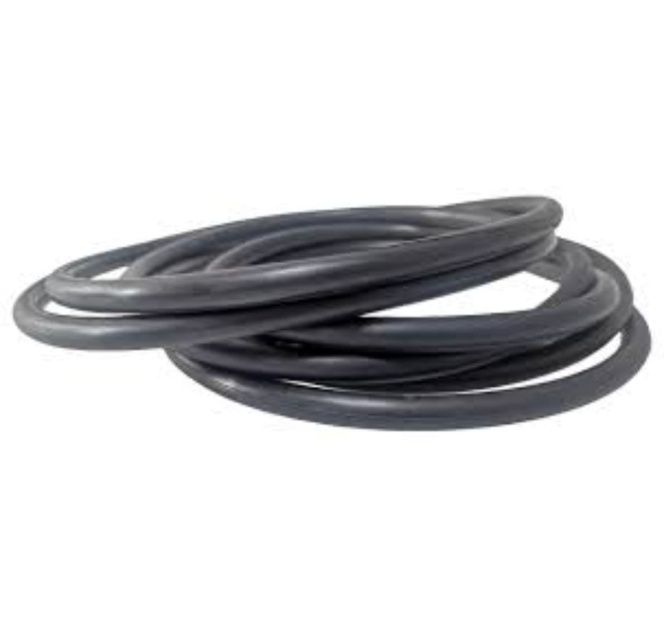
Midas, Asia’s largest manufacturer of tyre retreading materials, has launched O-rings designed for off-the-road (OTR) tyres, aimed at delivering reliable sealing performance in demanding operating conditions.
The O-rings are manufactured using high-quality natural rubber and are formulated to improve physical properties and ensure dimensional stability. According to the company, the product has been tested over many years in harsh environments and is intended to provide consistent, trouble-free performance in OTR tyre applications.
Midas said only REACH-compliant raw materials are used in the manufacture of the O-rings, underscoring its adherence to safety, quality and international regulatory standards.
Founded 56 years ago, Midas supplies tyre retreading materials to customers in more than 60 countries. The company said the launch reflects its continued focus on developing performance-oriented solutions for the global tyre and retreading industry.
Toyoda Gosei Launches Automotive Parts With 20% Recycled Rubber
- By TT News
- January 08, 2026
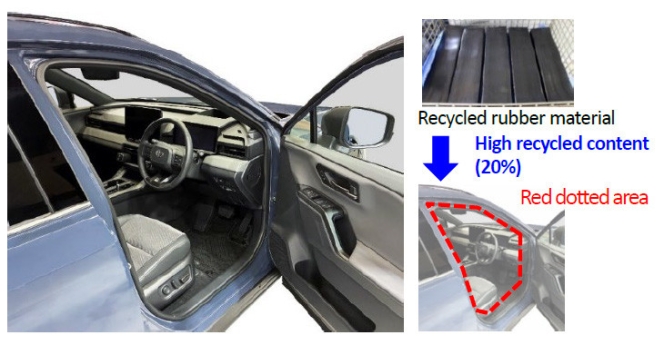
Toyoda Gosei has successfully commercialised automotive weatherstrips using recycled rubber, starting with the new Toyota RAV4. This marks a significant breakthrough in a field where rubber has historically been difficult to reuse, often ending up incinerated instead of truly recycled. Unlike steel or plastic, rubber recycling requires devulcanisation, a complex process that traditionally weakens the material and leaves behind unpleasant odours.
Through dedicated refinement of its proprietary devulcanisation technology, the company has overcome these longstanding quality hurdles. The advancements have dramatically increased the usable proportion of recycled material in automotive parts from under five percent to 20 percent, an achievement honoured by a Toyota Motor Project Award.
Looking ahead, Toyoda Gosei aims to extend this technology beyond synthetic rubber to include natural rubber, which is used in far greater volumes. The broader corporate ambition is to collaborate with automakers and partners to establish a full circular system. This system would collect and regenerate rubber from end-of-life vehicles, positioning the company as an industry leader in enabling both decarbonisation and sustainable resource circulation.
Michelin Reinforces Polymer Composite Solutions Business With Two Acquisition Projects
- By TT News
- January 05, 2026
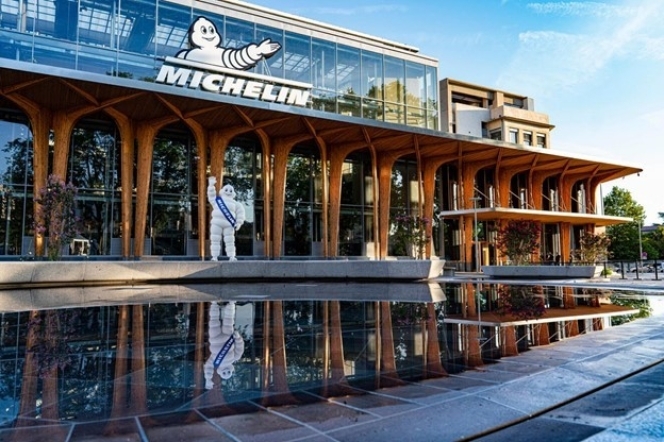
Pursuing its strategic goals for 2030, Michelin is actively extending its technological leadership into adjacent, high-value sectors. This expansion is being accelerated through two key acquisitions announced in recent months: Cooley Group and Tex Tech Industries. Both US-based companies are leaders in advanced materials, specialising in high-performance fabrics and coatings, and align strongly with Michelin’s own focus on innovation and quality while bringing complementary geographic and technical strengths.
Cooley Group, marking its centennial in 2026, excels in creating engineered polymer-coated fabrics. Its fully integrated production enables custom solutions for critical applications in healthcare, industrial containment and waterproofing. Similarly, Tex Tech Industries, with over a century of operation, designs and manufactures specialised textiles for extreme demands, including thermal protection systems for aerospace, fire-blocking aircraft interiors and advanced composite materials.
These strategic moves significantly bolster Michelin’s existing position in coated fabrics, notably through its European brand Orca. By integrating Cooley and Tex Tech, Michelin anticipates accelerating its global market reach and increasing the revenue of its Polymer Composite Solutions division by approximately 20 percent, equating to roughly USD 280 million. Given the growing scale of this business, Michelin intends to establish it as a dedicated reporting segment starting in 2026.
The acquisitions, slated for completion in the first half of 2026 pending regulatory approvals, will be transacted in cash, with financial terms currently undisclosed.
Birla Carbon Secures Platinum Medal In EcoVadis Sustainability Rating
- By TT News
- December 27, 2025
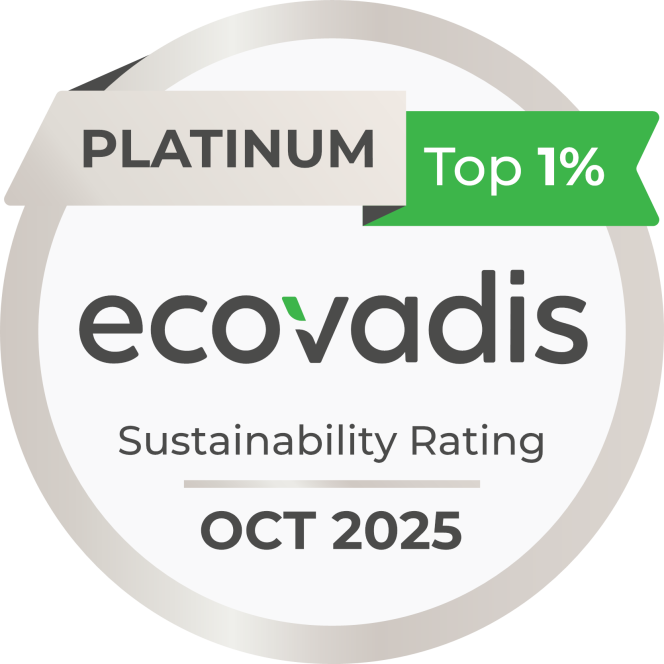
Birla Carbon, a leading global manufacturer and supplier of high-quality carbon materials, has been awarded the prestigious Platinum sustainability rating by EcoVadis, ranking it within the top one percent of all assessed companies globally. This honour recognises the firm’s enterprise-wide leadership in integrating sustainability across its operations, innovation and value chain.
The evaluation specifically commended its strong performance across four key areas: Environment, Labor & Human Rights, Ethics and Sustainable Procurement. This achievement is further validated by extensive third-party certifications, with over 75 percent of operations certified to international standards including ISO 14001, ISO 50001, ISO 45001, SA8000 and ISO 27001, underscoring the consistency and strength of its sustainability management systems.
John Loudermilk, President and CEO, Birla Carbon, said, “This Platinum rating reflects the steady progress we are making in embedding sustainability at the core of our business. Our growth strategy is geared towards delivering sustainability through innovation, operational excellence and responsible practices across our global footprint. We continually invest in sustainability and circularity-driven processes, keeping our operations sustainably efficient while creating long-term value for our customers, partners, communities and employees. Our sustainability strategy, Share the Future, serves as a roadmap to a sustainable future and guides our actions towards our aspiration of reaching net zero carbon emissions over the next 25 years. Being recognised among the top one percent of companies globally is a testament to the commitment of our teams worldwide.”


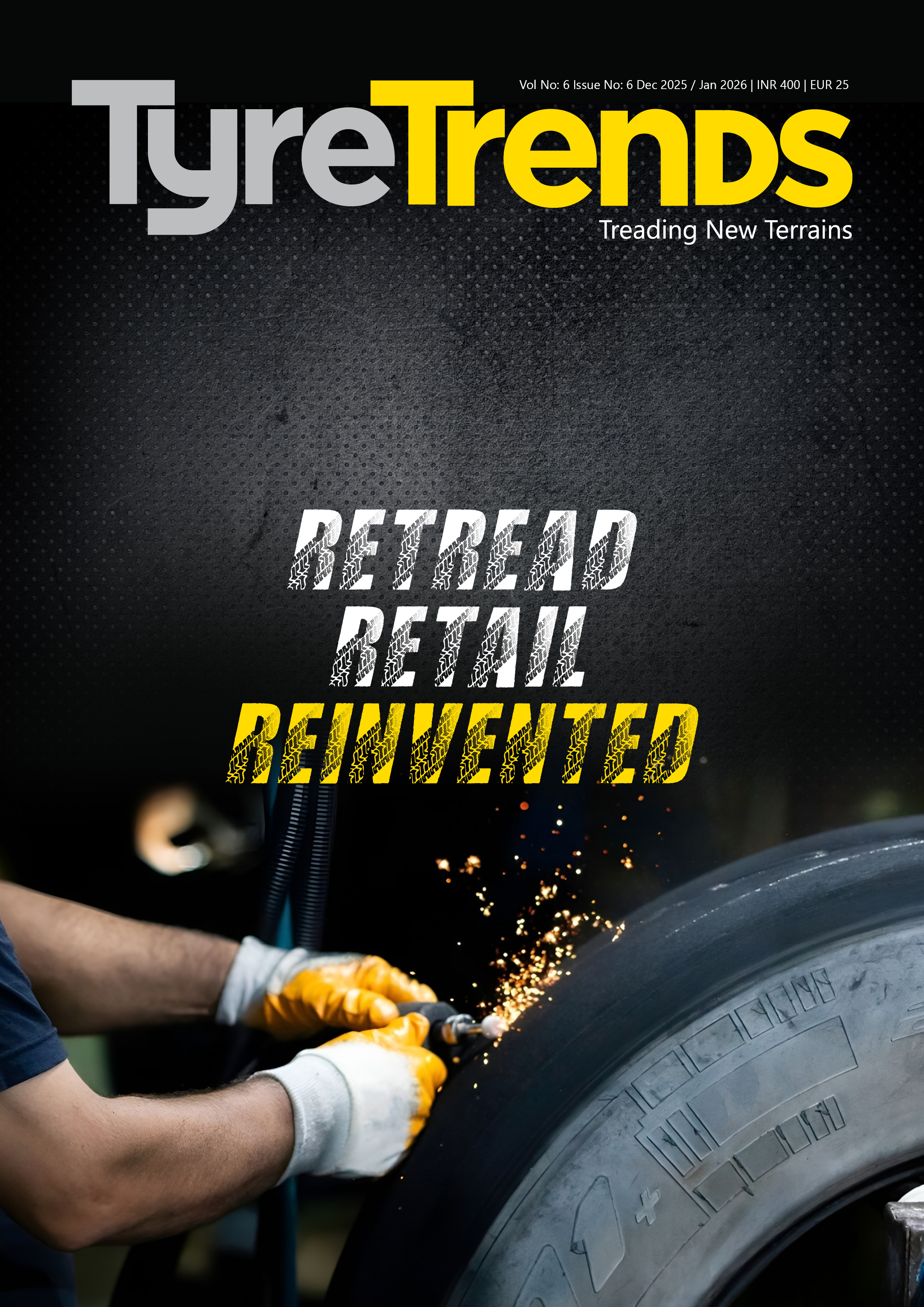
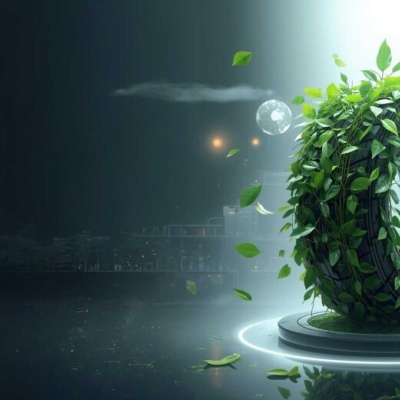



Comments (0)
ADD COMMENT